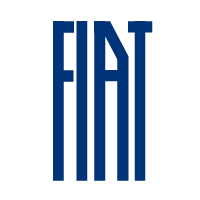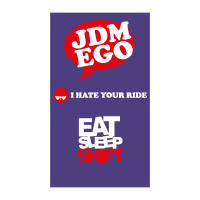The sport of football (or soccer for North Americans and Australians) holds a World Cup every four years. Sadly, my own national team, Northern Ireland, hasn’t reached the finals since 1982, and despite the recent goal-scoring feats of David Healy, doesn’t look like doing so anytime soon.
Tears aside, here’s the first in a series of posts featuring sport logos, this time showcasing World Cup logos from Brazil in 1950 to South Africa in 2010. I’ve added a little World Cup trivia for the football buffs among you.
Brazil 1950 logo

The 1950 World Cup was the first to include British participants. British teams withdrew from FIFA in 1920, partly out of unwillingness to play against the countries they had been at war with, and partly as a protest against a foreign influence on football.
FINAL SCORE: Uruguay 2-1 Brazil (there was no actual final this year, and the tournament was decided by a round-robin between four teams, with this match considered the decisive result to crown Uruguay world champions)
Switzerland 1954 logo

The World Cup was first televised in 1954 and is now the most widely-viewed and followed sporting event in the world, exceeding even the Olympic Games. The cumulative audience of the 2006 World Cup (including all of the matches) is estimated to be 26.29 billion. 715.1 million individuals watched the final match of this tournament (a ninth of the entire population of the planet).
FINAL SCORE: West Germany 3-2 Hungary
Sweden 1958 logo

This tournament was won by Brazil, who beat Sweden 5-2 in the final for their first title. The World Cup marked the debut on the world stage of 17-year-old Pelé, who would grow to be considered by many the greatest footballer of all time.
FINAL SCORE: Brazil 5-2 Sweden
Chile 1962 logo

The competition was marred by overly defensive and often violent tactics. This poisonous atmosphere culminated in the infamous first-round match between host nation Chile and Italy (2-0), known as the Battle of Santiago. Two Italian journalists had written unflattering articles about the host country. Although only two players (both of them Italian) were sent off by the overly weak English referee Ken Aston, the match saw repeated, deliberate attempts from players on both sides to harm opponents, and the Italian team needed police protection to leave the field in safety.
FINAL SCORE: Brazil 3-1 Czechoslovakia
England 1966 logo

London’s Wembley Stadium provided the venue for the final, and 98,000 people crammed inside to watch England take on West Germany. BBC commentator Kenneth Wolstenholme’s description of the match’s closing moments has gone down in history, “Some people are on the pitch. They think it’s all over.” (Geoff Hurst scores his third to make it 4-2) “It is now!”.
FINAL SCORE: England 4-2 West Germany (after extra-time)
Mexico 1970 logo

The Brazilian team, featuring the likes of Pelé (who was in his fourth and final World Cup), Carlos Alberto, Clodoaldo, Gérson, Jairzinho, Rivelino, and Tostão, is usually regarded as the greatest attacking World Cup team ever. This tournament is still considered by many fans to be the finest World Cup in history.
FINAL SCORE: Brazil 4-1 Italy
West Germany 1974 logo

Ninety-eight countries took part in the qualifying tournament, and as usual there were some high-profile failures on the road to the finals. England were among them, having lost out to Poland in their qualifying group. France, Spain and Hungary also failed to reach the finals.
FINAL SCORE: West Germany 2-1 Netherlands
Argentina 1978 logo

A controversial fact surrounding the 1978 World Cup was that Argentina had suffered a military coup only two years before the cup. Because of this, some countries, most notably the Netherlands, considered publicly whether they should participate in the cup. Despite this, all teams eventually participated without restrictions although the Dutch team attended without its star, Johan Cruijff, who refused to participate.
FINAL SCORE: Argentina 3-1 Netherlands (after extra-time)
Spain 1982 logo

There was a controversial match between West Germany and Austria in the group stages. Both teams knew that a West German win by 1 or 2 goals would qualify them both, while a larger German victory would qualify Algeria over Austria, and a draw or an Austrian win would eliminate the Germans. After 10 minutes of furious attack, Germany succeeded in scoring through a goal by Horst Hrubesch. After the goal was scored, the two German-speaking teams went into an unspoken agreement and just kicked the ball around aimlessly for the rest of the match. Chants of “Fuera, fuera” (“Out, out”) were screamed by the appalled Spanish crowd, while angry Algerian supporters waved banknotes at the players. This sham performance was widely deplored, even by the German and Austrian fans who had hoped for a hot rematch of the 1978 FIFA World Cup match in which Austria had beaten West Germany. One German fan was so upset by his team’s display that he burnt his German flag in disgust. As a result of the outcome, FIFA introduced a revised qualification system at subsequent World Cups in which the final two games in each group were played simultaneously.
FINAL SCORE: Italy 3-1 West Germany (Northern Ireland managed to beat host nation Spain 1-0 in the group stages – a very proud moment, even though I was only three years old)
Mexico 1986 logo

Colombia was originally chosen as hosts by FIFA. However, the Colombian authorities declared in November 1982 that they could not afford to host the World Cup under the terms that FIFA demanded. Mexico was selected on May 20, 1983 as the replacement hosts, beating the bids of Canada, and the United States (who eventually hosted the 1994 World Cup), and became the first nation to host two World Cups. This second World Cup in Mexico came only 16 years after the first one in 1970.
FINAL SCORE: Argentina 3-2 West Germany
Italy 1990 logo

With its third title (and three second place finishes) West Germany became the most successful World Cup nation for four years, until Brazil won their fourth title in 1994. West German team manager Franz Beckenbauer became the second footballer, after Mário Zagallo of Brazil, to win the World Cup as a player (in 1974) and as team manager. In doing so, Beckenbauer also became the first captain of a winning team to later manage a winning squad. Italy’s Salvatore Schillaci won both the Golden Boot as the tournament’s top goalscorer, with six goals, and the Golden Ball as the tournament’s best player.
FINAL SCORE: West Germany 1-0 Argentina
USA 1994 logo

The average stadium attendance for the tournament was 69,000 while the total attendance was 3.6 million. The 1994 World Cup holds the record for the highest attendance in World Cup history. It was also the highest-attended single sport sporting event in United States history.
FINAL SCORE: Brazil 0-0 Italy (Brazil win 3-2 on penalties)
France 1998 logo

For the first time ever, the final featured the host nation and the defending champions. Zinedine Zidane scored two headers from corners in the 26th minute and in first half stoppage time respectively, and Emmanuel Petit added a late goal in second half stoppage time to give France a 3-0 win over Brazil. Brazil’s star player Ronaldo played poorly, having a mysterious fit the night before and many questioned his reinstatement in the starting lineup. An estimated one million people took to the Paris streets to celebrate through the night. France became the seventh world champions, joining Uruguay, Italy, Germany, Brazil, England and Argentina.
FINAL SCORE: France 3-0 Brazil
Korea Japan 2002 logo

For the first time in its history, the World Cup was organized by two countries. It was also the first World Cup held in Asia, and the first held outside South America, Europe, and North America. South Korea and Japan each provided ten stadia, the vast majority of them newly built for the tournament.
FINAL SCORE: Brazil 2-0 Germany
Germany 2006 logo

Teams representing 198 national football associations from all six populated continents participated in the qualification process which began in September 2003. Thirty-one teams qualified from this process, along with the host nation, Germany, for the finals tournament.
FINAL SCORE: Italy 1-1 France (Italy win 5-3 on penalties)
South Africa 2010 logo

Several non-governmental organisations and poor people’s movements have expressed major concern about plans to regulate the prevalence of squatter camp shelters to improve the image of the World Cup venues. Concerns are particularly acute in Durban where local politicians have promised to ‘clear the slums by 2010′. It has also been argued that it is inappropriate to invest so much public money on stadia when much of the population lacks basic services and housing.
Voting for the official World Cup poster was opened to the public, and I was pleased to see the second option was chosen.
Proposed FINAL SCORE: Northern Ireland 5-0 Brazil (Airey becomes the first player to score 5 goals in a final)
My favourites
Mexico 70 get the thumbs-up. Simple and stylish, albeit obvious. The type treatment isn’t good at small sizes.
Choosing a favourite was almost as difficult as choosing my least favourite, because there isn’t a design that really stands out amongst the rest.
Germany 06 gets the thumbs-down. Design by committee gone horribly wrong. “Put this here. Add that. Don’t forget the…”
It wasn’t easy choosing the worst logo design, as there are quite a few I don’t like. Some would even be better used as posters than logos, and I guess this was in the thinking during the design stage. If you know of any further info on each design, I’d appreciate you leaving a comment.














